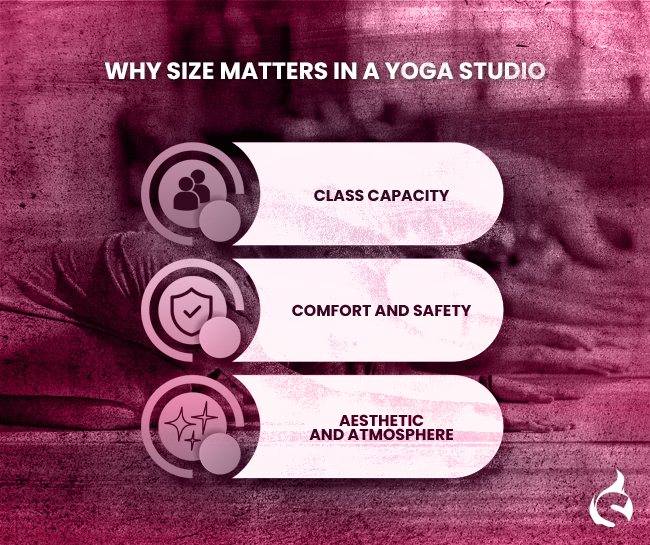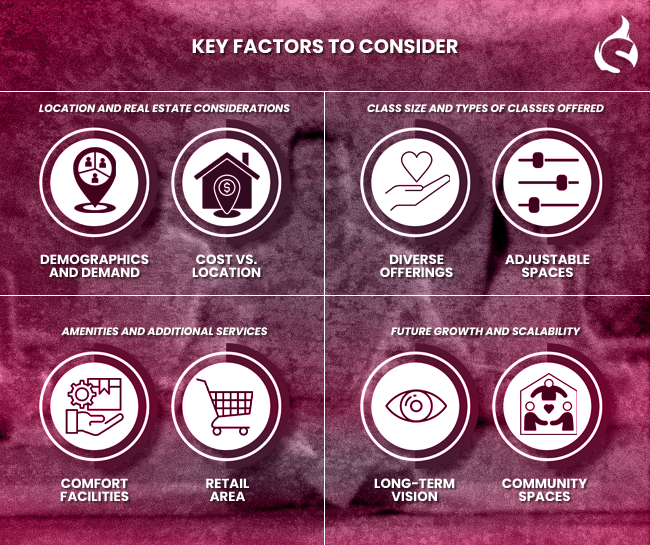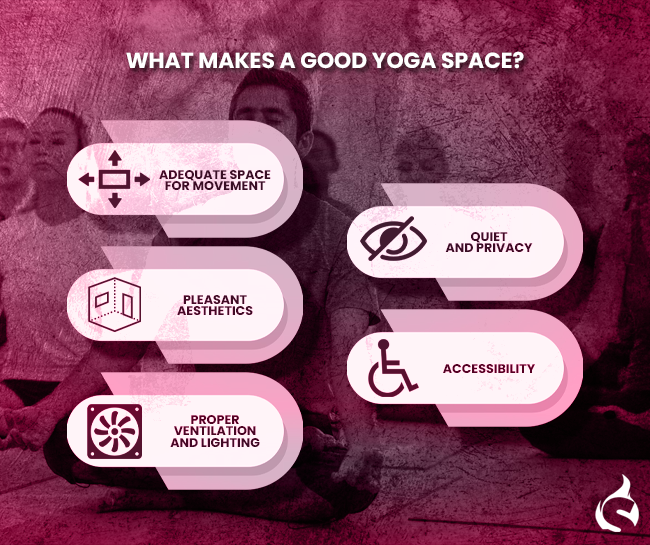
When embarking on the journey of opening or renovating a yoga studio, one of the fundamental questions that arise is about the size. The dimensions of your studio can significantly impact the quality of practice, the variety of classes you can offer, and the overall atmosphere. This guide aims to help yoga studio owners and aspiring entrepreneurs make informed decisions about their studio size, ensuring it’s a haven of tranquility and functionality.
Why Size Matters in a Yoga Studio

The size of a yoga studio goes beyond mere square footage; it’s about creating a space that resonates with tranquility and allows for movement and growth. Here’s why size is a critical aspect:
- Class Capacity: Adequate space ensures that each participant has enough room to stretch and move without hindrance.
- Comfort and Safety: Overcrowding can lead to discomfort and potential injuries. A well-sized studio promotes a safer practice environment.
- Aesthetic and Atmosphere: The space should accommodate essential elements like lighting and decor that contribute to a calming yoga experience.
Key Factors to Consider

Determining the right size for your yoga studio is more than a numbers game; it’s about understanding the interplay of various elements that contribute to the overall experience. Considerations range from practical constraints of real estate to the aspirational goals of your yoga community.
Location and Real Estate Considerations
- Demographics and Demand: Research the local population’s age, income, and interests. A younger, more dynamic crowd might prefer vigorous styles like Ashtanga or Power Yoga, necessitating more space per person. Conversely, a community interested in gentle or restorative yoga might be fine with smaller, cozier spaces.
- Cost vs. Location: Prime locations come with higher costs. Weigh the benefits of being in a central, accessible location against the rent or purchase price. Sometimes, a slightly more remote location can offer much larger space for the same price, but consider if it might deter regular attendance.
Class Size and Types of Classes Offered
- Diverse Offerings: If you plan to offer a range of classes, including workshops, teacher training, or children’s yoga, each will have its own spatial requirements. Workshops might need extra room for props and equipment, while children’s yoga might need less space per person but more storage for mats and toys.
- Adjustable Spaces: Consider using movable dividers or curtains to make the space adaptable for different class sizes or simultaneous sessions.
Amenities and Additional Services
- Comfort Facilities: Think about showers, lockers, and a lounge area. These amenities can significantly enhance client satisfaction and retention but also require additional space and maintenance.
- Retail Area: Selling yoga-related products requires additional space but can be a significant revenue stream. Plan for an attractive, accessible area that doesn’t interfere with the flow of classes.
Future Growth and Scalability
- Long-term Vision: Envision where you want your studio to be in 5 or 10 years. If you anticipate significant growth, consider a location where you can expand or reconfigure the space.
- Community Spaces: As your community grows, you might want to add areas for socializing, outdoor classes, or special events. These can be part of your long-term spatial planning.
What Makes a Good Yoga Space?

Creating an ideal yoga space transcends basic functionality; it’s about fostering an environment that promotes tranquility, focus, and connection. Consider these key elements that contribute to a nurturing and effective yoga sanctuary.
- Adequate Space for Movement: Ensure enough room for all poses and flows.
- Pleasant Aesthetics: Use colors, textures, and elements that evoke tranquility.
- Proper Ventilation and Lighting: Fresh air and natural light can significantly enhance the yoga experience.
- Quiet and Privacy: A space away from noise and distractions allows deeper focus.
- Accessibility: Consider ease of access for all clients, including those with disabilities.
Choosing the right size for your yoga studio is a balance of practicality, aesthetics, and foresight. It’s about creating a space that accommodates your vision, the needs of your clients, and the growth of your practice. Remember, the size of your studio sets the stage for the experiences you’ll offer. Reflect on these guidelines, consider your unique circumstances, and create a space that feels like a true yoga sanctuary.
Unlock prosperity for your yoga studio! 🌟 Read our blog, “How Do Yoga Studios Make Money,” for 18 revenue-boosting strategies. Ready to elevate? 🚀 Explore Spark Membership Software for seamless studio management and maximize your success.